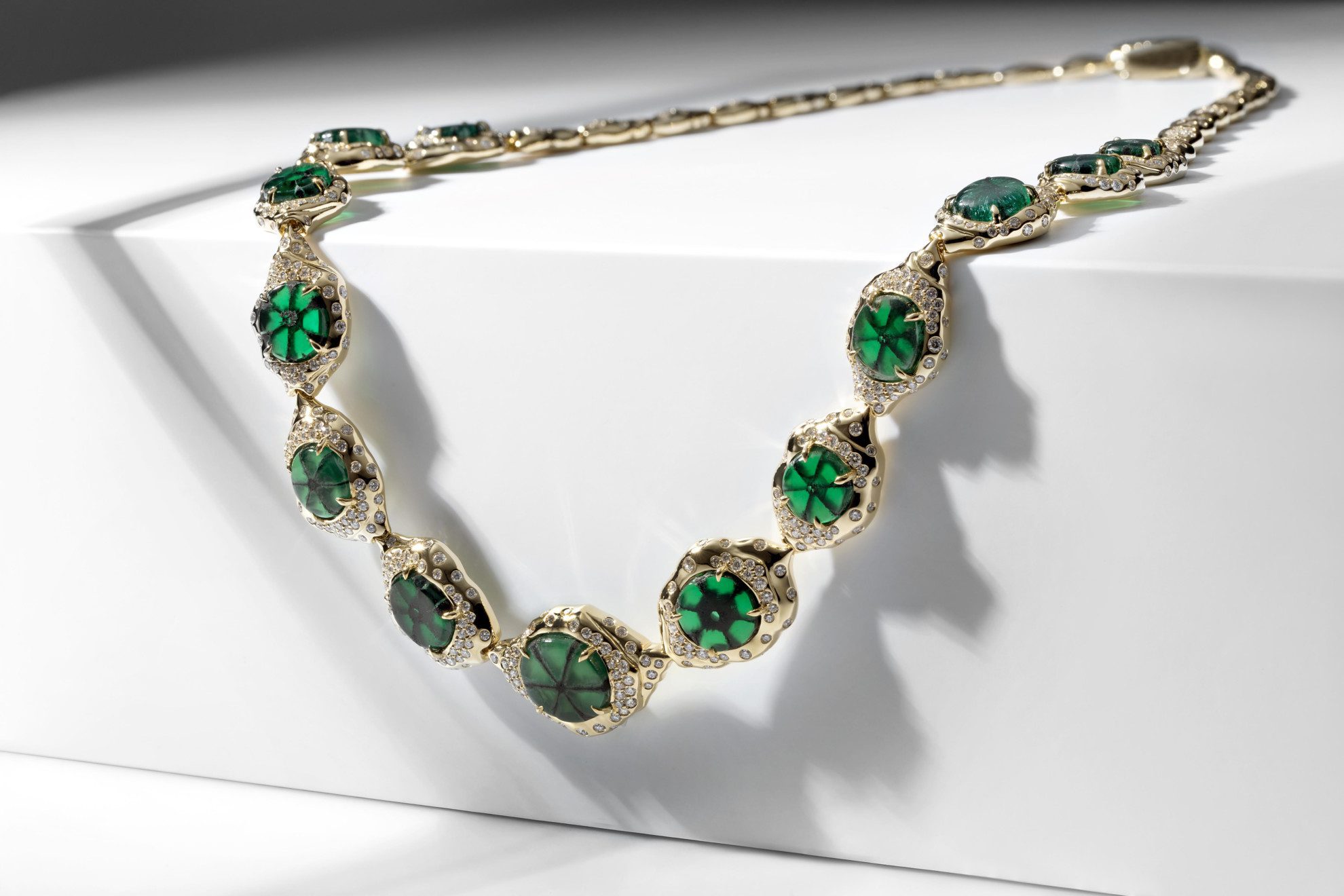Trapiche Gems: An Introduction
Satisfying the human desire for symmetry, trapiche gems have a special allure. Learn what makes these rarities so unique in our introductory article.
1 Minute Read
What is a Trapiche Gem?
Not to be confused with star stones, trapiches are minerals that form with a radiating star of inclusions between growth sectors. Some form with a core or hub with spokes radiating outward from the core, while others form spokes from the center of the gem. Only minerals with a highly symmetric crystal habit are known to form the "spokes" or "arms" that define a trapiche gem. Additionally, all true trapiche gems contain inclusions of organic matter.
Which Minerals Can Form Trapiche Gems?
In 1879, Emile Bertrand first described a trapiche emerald from Muzo, Colombia. Indeed, trapiche emeralds may be the best-known examples of these gems.
In 1995, over a century after the first description of trapiche emeralds, Mong Hsu, Myanmar reported finding trapiche rubies. The next year, trapiche sapphires entered the market. Gemological laboratories have also confirmed specimens of trapiche tourmaline, garnet, quartz, spinel, and aquamarine.
Trapiche Gem Formation
True trapiches form where geothermal waters meet a carbonaceous host rock. These fluids are full of the chemicals that lead to gem formation, so seed crystals can form. Then, a type of zoning occurs during mineral growth. The gem ceases to grow along the rough edges of the crystal. Instead, it grows only on the smooth faces. This leads to the equivalent growth faces that trapiche gems display.
Type A and Type B
When the gem material grows on the mineral faces, with arms of carbonaceous inclusions, the trapiche gem is "type A" or "standard." Exceptionally rare specimens of "type B" or "reverse" trapiches can also occur. In these specimens, the gem material itself forms the arms.
Trapiche-like Gems
True trapiches have inclusions between growth sections. However, simple color zoning or inclusion growth within a crystal can create "trapiche-like" patterns in some gems. This means that the crystal of these trapiche-like gems is continuous, whereas in true trapiches the mineral is broken up into sectors which grow individually.
Still, these gems have the stunning symmetry associated with trapiche gems and are also immensely rare. The same minerals that form true trapiches may form trapiche-like color zoning or, in the case of rutilated quartz, spectacular patterned inclusions. In addition, diamond and pezzottaite (a part of the beryl family) can grow into trapiche-like gems.
Minerals with less symmetric crystal habits may also form trapiche-like gems. For example, trapiche-like rhodochrosite occurs in Argentina.
Addison Rice
A geologist, environmental engineer and Caltech graduate, Addison’s interest in the mesmerizing and beautiful results of earth’s geological processes began in her elementary school’s environmental club. When she isn’t writing about gems and minerals, Addison spends winters studying ancient climates in Iceland and summers hiking the Colorado Rockies.
Related Articles
Garnet Value, Price, and Jewelry Information
Aquamarine Value, Price, and Jewelry Information
Tourmaline Gem, Price, and Jewelry Information
Emerald Value, Price, and Jewelry Information
Latest Articles
800 Years of Mogok: A Celebration in Tenuous Times
What is the Average Gemstone Faceting Yield?
Pyroxmangite Value, Price, and Jewelry Information
How to Identify Emerald Simulants and Synthetics
Never Stop Learning
When you join the IGS community, you get trusted diamond & gemstone information when you need it.
Get Gemology Insights
Get started with the International Gem Society’s free guide to gemstone identification. Join our weekly newsletter & get a free copy of the Gem ID Checklist!
